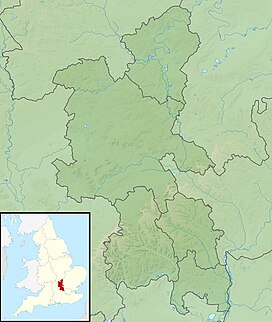Coombe Hill, Buckinghamshire
| Coombe Hill | |
|---|---|

The monument on Coombe Hill
|
|
| Highest point | |
| Elevation | 260 m (850 ft) |
| Coordinates | 51°45′09″N 0°46′17″W / 51.75257°N 0.77149°WCoordinates: 51°45′09″N 0°46′17″W / 51.75257°N 0.77149°W |
| Geography | |
|
Coombe Hill shown within Buckinghamshire
|
|
| Location | Chiltern Hills, England |
| OS grid | SP849067 |
| Topo map | OS Landranger 165 |
Coombe Hill is a hill in The Chilterns, located next to the hamlet of Dunsmore, Buckinghamshire, England, near the small town of Wendover, and overlooking Aylesbury Vale. It is not to be confused with another Coombe Hill on the flank of Haddington Hill, some two miles (3 km) to the north-east. It is part of the Bacombe and Coombe Hills Site of Special Scientific Interest.
The majority of the hill (an area of 106 acres (43 ha)) once formed part of the Chequers Estate but was presented to the National Trust by the United Kingdom government when they were given the Estate in the 1920s. The summit of the hill is 852 feet / 259.7 m above sea level.
For most of human history, war memorials were erected to commemorate great victories; remembering the dead was a secondary concern. Coombe Hill Monument is one of the first and largest examples of a war memorial erected to honour the names of individual men who fell whilst fighting for their country. The monument is an iconic Buckinghamshire landmark and a Grade II Listed monument. At 260m above sea level, it sits on one of the highest and most striking spurs of the Chilterns, commanding a wide view of the Vale of Aylesbury. On a clear day it can be seen from the Berkshire Downs and Salisbury Plain to the south-west and the Cotswolds to the west. The view overlooks Chequers, the country home of the Prime Minister.
The monument was erected in 1904, by public subscription, in memory of 148 men from Buckinghamshire who died during the Second Boer War. Coombe Hill Monument was almost totally destroyed by lightning in 1938 and was rebuilt in the same year. The original bronze plaque and decorations were stolen in 1972 and replaced with a stone plaque and iron flag. The new stone plaque was also inscribed with the additional names of nine men believed to have been missing on the original. The monument was again badly damaged by a lightning strike in the early 1990s and spent several months in repair. It is now equipped with conductors to prevent this from happening again. The monument and a few square metres of surrounding land are owned by Buckinghamshire County Council.
...
Wikipedia

